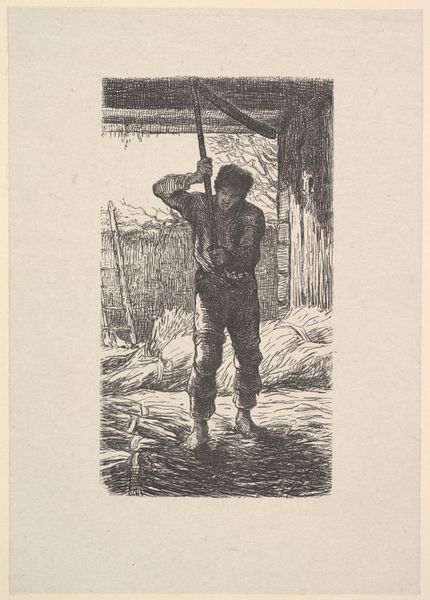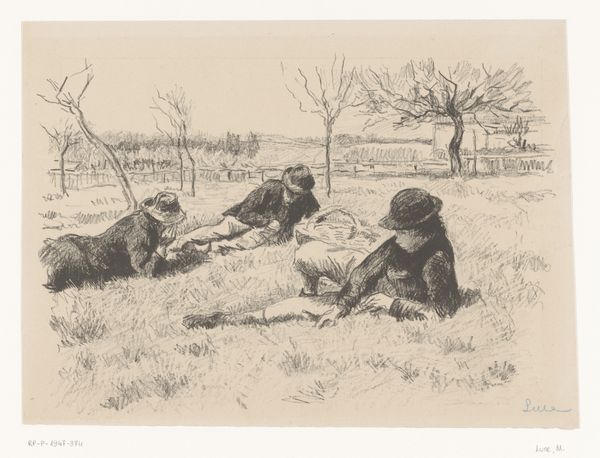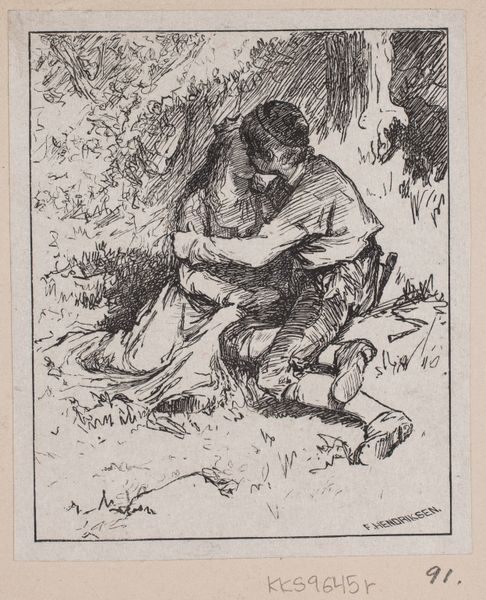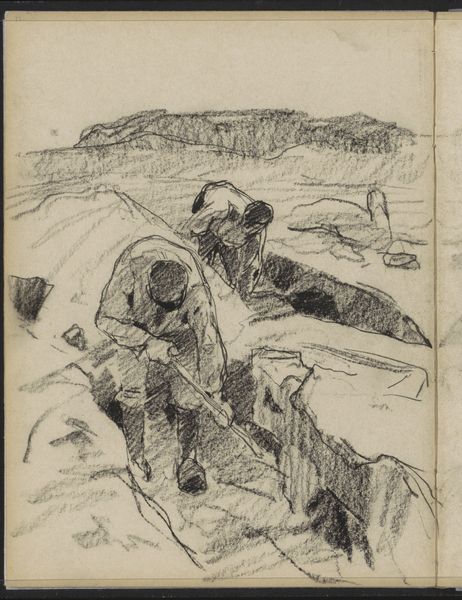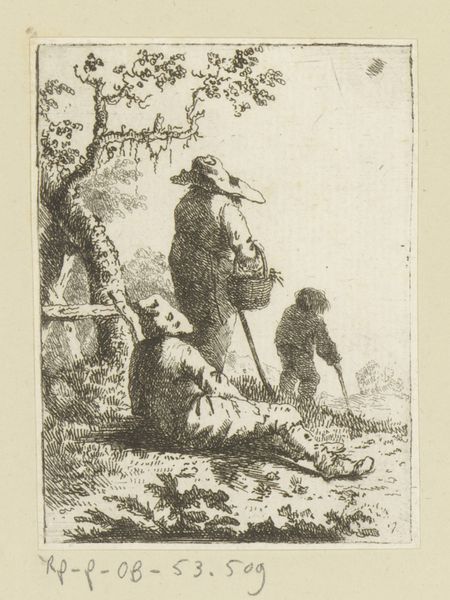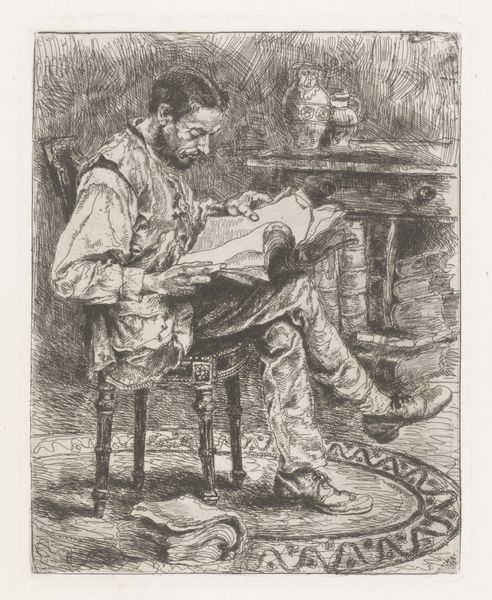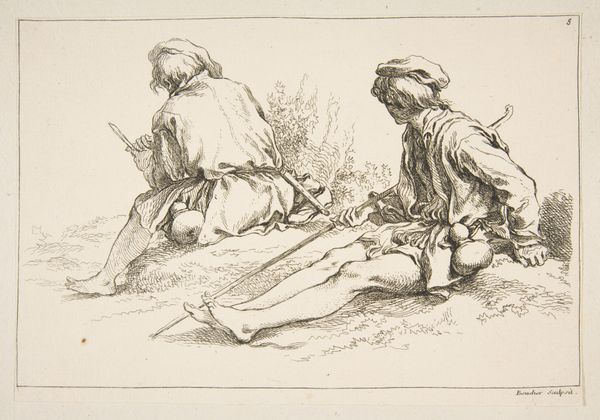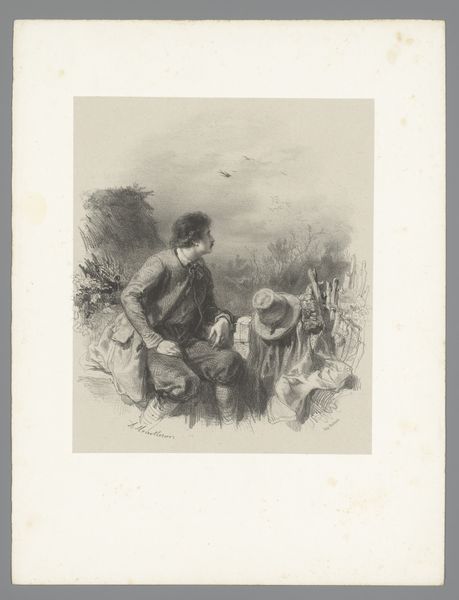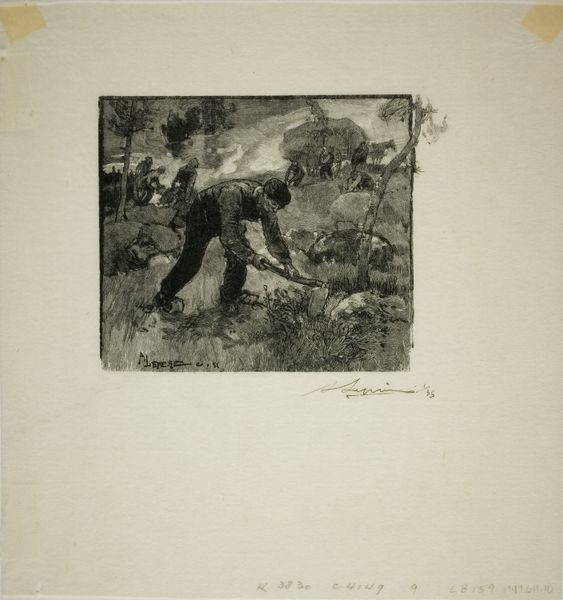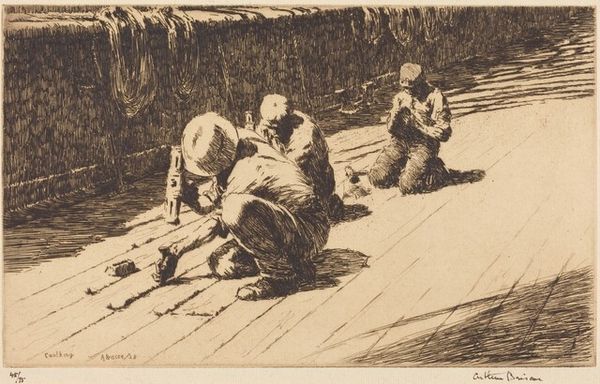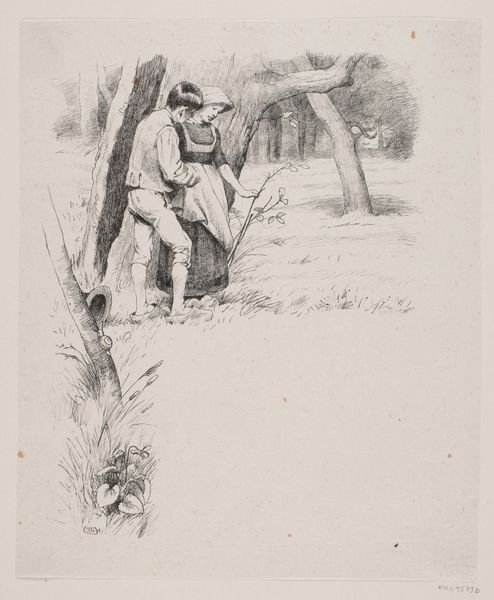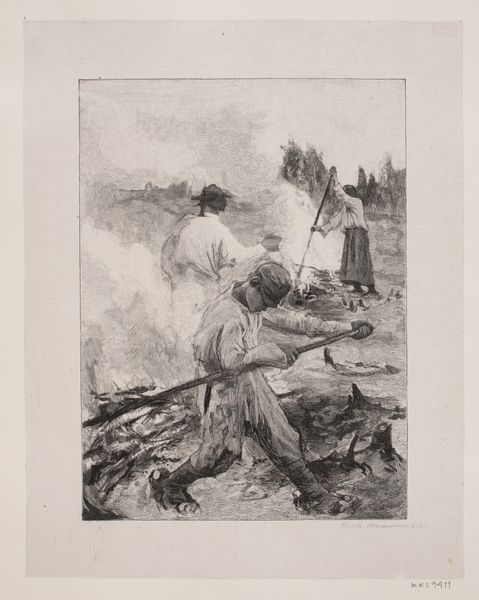
Renée Mauperin: Henri Mauperin Wounded after the Duel with Boisjorand de Villacourt 19th century
0:00
0:00
drawing, print, etching, engraving
#
portrait
#
drawing
#
narrative-art
# print
#
etching
#
figuration
#
history-painting
#
engraving
#
realism
Dimensions: sheet: 13 9/16 x 8 5/8 in. (34.4 x 21.9 cm) plate: 6 3/8 x 4 3/16 in. (16.2 x 10.7 cm)
Copyright: Public Domain
Curator: Standing before us is a 19th-century print, “Renée Mauperin: Henri Mauperin Wounded after the Duel with Boisjorand de Villacourt,” crafted by James Tissot. He used engraving and etching techniques here, currently at the Metropolitan Museum of Art. What’s your take? Editor: Utter desolation. That single figure sitting, seemingly alone and bleeding—the sparse background only emphasizes the mood of profound dejection, and I wonder what he must be feeling at this point. It is hard to know who to turn to when wounded in that way. Curator: The scene comes straight out of Émile de Girardin’s novel *Renée Mauperin*, so Tissot isn’t inventing the drama here. Duel culture was intricately linked to notions of honor and masculinity within certain echelons of society. Editor: Absolutely! And what Tissot’s print does is bring those themes to a more intimate, personal level. It’s not a glorious battle scene. It's this aftermath, a private reckoning with possible consequences and public expectations all twisted up. I love how Tissot has made the figures in the distance secondary. It reminds us about what is at stake with ideas about social propriety and so forth. Curator: Tissot occupied an interesting space; he critiqued and benefited from that world. These kinds of duels became symbolic events showcasing this very strange moral code. What I find so powerful is his use of such stark detail, that is both immediate and very poignant, highlighting the physical and emotional tolls. Editor: Indeed, the marks that make up the lines show how everything about the process of printmaking is integral to showing the cost of violence—like an afterimage of something really powerful. The contrast of light and shadow isn’t just aesthetic; it symbolizes the fading illusion of grandeur surrounding these tragic duels. And you know it really isn't what we romanticize now, despite movies making it seem a certain way. Curator: Exactly! Tissot invites us to really consider, what do we truly glorify and who suffers in the process. I really think it brings a sense of realism. Editor: To view “Renée Mauperin” is to step into a silent, emotional theater. And ponder the intricate ways we weave both violence and personal destruction in culture. Curator: Couldn't agree more, what really stuck with me today, however, is Tissot’s delicate hand and stark subject highlighting both our obsessions and blindspots as humans.
Comments
No comments
Be the first to comment and join the conversation on the ultimate creative platform.
